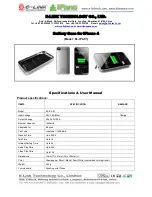
1
HW-AV-LTE-M
CLSS Pathway
Product Installation Document
Overview
The CLSS Pathway (HW-AV-LTE-M) is a dual-path cellular communicator, which runs on a 24-volt power
from its panel. It supports both AT&T and Verizon LTE networks, and uses any of them with a stronger signal.
It transmits Contact ID data from its fire panel to the panel’s central monitoring station.
This document includes instructions for mounting and wiring only. For this purpose, the guide uses the optional
enclosure HW-AV-ENC.
Other Features
The communicator also has other features, including secondary data transmission via an Ethernet connection as
well as monitoring dry-contact relay outputs.
Information Sources
For more detailed procedures and all configuration options:
Installation and Operation Manual
(LS10340-000HW-E)
For quickly install and configure CLSS Pathway, refer to the
Quick Start Guide
(LS10339-000HW-E), which
comes with the communicator.
To access the most updated versions of all product documentation, log on to
CLSS Site Manager
and access
the help section.
A. Mounting the Communicator
NOTES:
Inform the central monitoring station to put your CLSS Account on test.
If installing on an existing operational panel, inform the operator and the local authority that the panel will be
a temporarily out of service.
Check that you have the communicator, 3-ft antenna, and the
Quick Start Guide
from the carton box.
Only a regulated UL-listed UOJZ, UTOU, or NBSX control panel or power supply should power the
communicator.
The communicator must be connected to a UL-listed control panel with power limited circuits.
For UL installations, secure the communicator to a UL-listed enclosure, such as a UL-listed junction box.
Install the communicator only at a dry indoor location.
The location and wiring methods must be in accordance with the
National Electrical code, ANSI/NFPA 70
.
Install in accordance with the
National Fire Alarm and Signalling Code, NFPA 72
.
Mount the communicator inside an enclosure, for example HW-AV-ENC, as shown in Figure 1 below.
Enclosure should be close nipple to the fire alarm control panel.



























